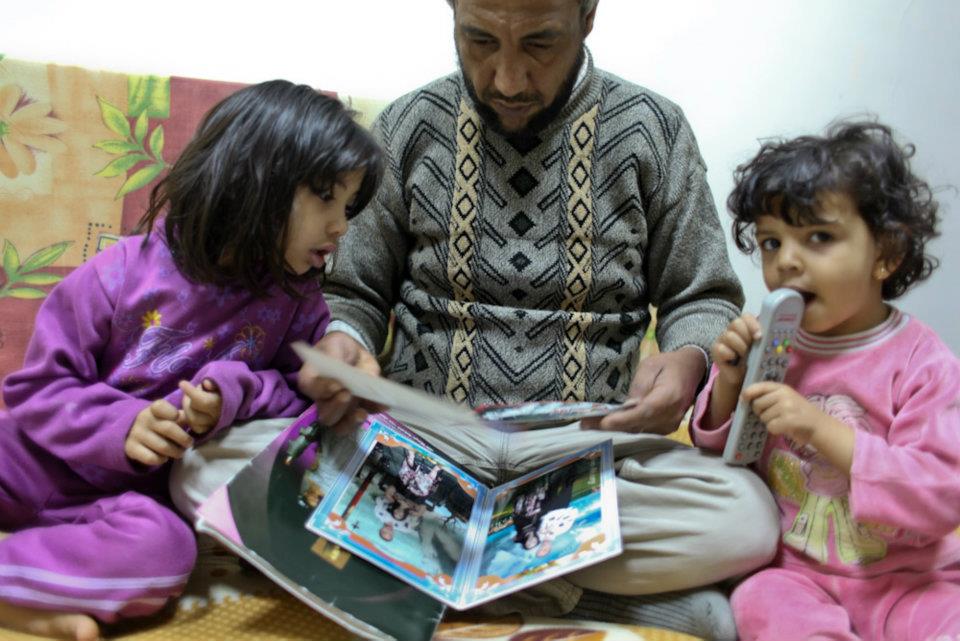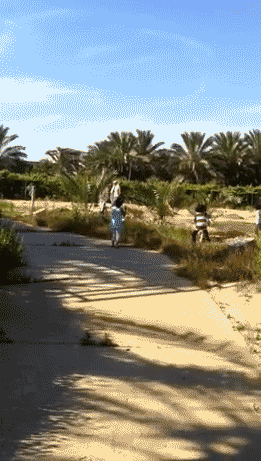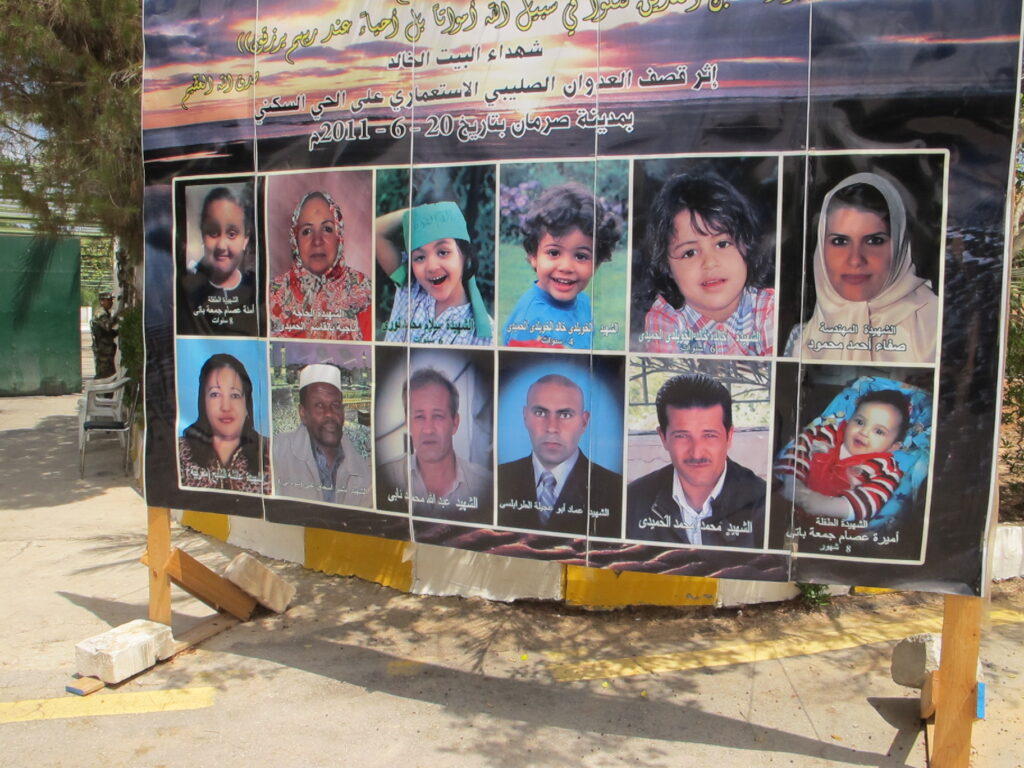Inside the two year investigation to track down victims of NATO bombing campaign
Today a joint investigation by Airwars, Altinget and The Guardian revealed that Danish planes conducted strikes in a number of well-known civilian harm incidents from the 2011 NATO bombing campaign in Libya.
The release of documents showing Danish involvement in strikes in which at least 14 civilians were killed has raised hopes for accountability for the victims and placed pressure on Copenhagen to explain why they were kept secret for a decade. In response to this investigation, Denmark on Thursday pledged to review whether a full investigation should have been opened at the time.
To accompany the news stories, which you can read here (The Guardian, English) and here (Altinget, Danish), this article by Joe Dyke, Rasmus Raun Westh and Maia Awada explains the process by which we uncovered Denmark’s admission of involvement in specific strikes and then tracked down the families of the victims.
Nato strikes
In February 2011, with Libya engulfed in mass ‘Arab Spring’ protests, the country’s dictator Colonel Muammar Gaddafi cracked down. With fears of potential massacres, the United Nations voted for a NATO-led intervention on the legal basis of protection of civilians – making allegations of civilians killed by NATO particularly sensitive.
Over eight months, the international bombing campaign and armed Libyan rebel groups forced Gaddafi’s troops into submission, with NATO states conducting 9,700 strike sorties and destroying 5,900 targets.
Of the eight NATO nations that conducted airstrikes, Denmark was among the most committed – dropping 923 bombs. At one point, the Danes dropped so many bombs they nearly ran out of ammunition. The NATO Secretary General at the time, Rasmus Fogh Andersen, was also a former Danish Prime Minister.
In October 2011, Gaddafi was captured in his home city of Sirte and killed by rebels, effectively ending the war. In the decade since, Libya has become a dysfunctional state with rival governments engaged in a stuttering civil war, fuelling debate about whether the NATO campaign achieved its goals.

Mahmood Zarooq in his home in Sirte after a NATO airstrike in 2011. His wife was killed in the strike (Human Rights Watch/Sidney Kwiram)
After the war, allegations of civilians killed by NATO strikes also surfaced, with The New York Times, Human Rights Watch (HRW), Amnesty International and later the United Nations each conducting extensive on-the-ground research into the victims. Each report found that NATO took significant measures to avoid harming civilians, but identified a number of separate allegations of civilians killed.
Danish culpability was speculated on as early as 2011, with media in Copenhagen reporting that some key strikes were likely conducted by Danish pilots, but Danish authorities refused to comment.
Freedom of Information
In early 2021, Rasmus filed a Freedom of Information Request with the Danish Defence Command seeking “all communication regarding civilian casualties during the Air Force’s mission in Libya in 2011.”
A month later, an email appeared in his inbox. Attached were dozens of pages of internal reports never before seen by the Danish public. Why they had been declassified now was unclear – Rasmus, Joe and other reporters had similar requests rejected previously.
But as he flicked through, Rasmus knew he had a big story. The documents revealed for the first time that after the 2011 war, Denmark conducted a review of its involvement in strikes in which civilians had reportedly been harmed. While Danish officials had not conducted any ground research in Libya themselves, they had cross checked their strike list with all the allegations of civilian harm documented by HRW, Amnesty, the UN and others.
The review found that Danish planes dropped bombs in four strikes in which Libyan civilians were reportedly harmed.
It was completed in early 2012. Danish officials could have released the findings and offered routes to compensation and accountability for the victims’ families. Instead the documents were marked secret and classified – kept from the Danish population for more than a decade until they arrived in Rasmus’ inbox.
Marc Garlasco, who led the United Nations investigation into civilian victims from NATO strikes, said the documents “show that Denmark killed civilians and kept it secret from us.”
Tracking down the victims
Once Rasmus and Joe agreed to conduct a joint investigation, they had one immediate priority – searching for the victims’ families.
A quirk of modern international military coalitions is that while operations are conducted as a collective, civilian harm or compensation claims can often only be levelled at individual member nations. This was true with NATO in 2011, and it has been true with other campaigns since – such as the US-led Coalition against the so-called Islamic State in Iraq and Syria.
In almost all cases strikes are officially conducted by the coalition as a whole, with the individual member states not named. States argue this is necessary as it is a joint campaign so who pulls the trigger to drop any particular bomb is unimportant. Yet for the victims it feels like a Catch-22 – to seek accountability they must know which state carried out a strike, but coalitions say strikes are conducted collectively.
The documents released to Rasmus meant that, in these four instances, the victims’ families could have an answer to who harmed their loved ones – opening the door to accountability.
With support from the Journalismfund Europe, experienced Lebanese forensic investigator Maia Awada joined the team. Together, we conducted in-depth searches into the strikes over six months – trying to speak to each and every witness we could find to build out a fuller picture of the attacks.
Tower block flattened
In one of the four incidents, the report contained few details to investigate – with only the injury of one unnamed victim reported. As such, the team focused primarily on the other three.
The first one we investigated took place in Gaddafi’s home town Sirte, on September 16th 2011, a few weeks before the dictator’s death.
Both HRW and Amnesty visited the site after the strike and documented the bombing of a residential tower block. Pictures showed part of the block, known as the Al-Tameen Building, flattened.
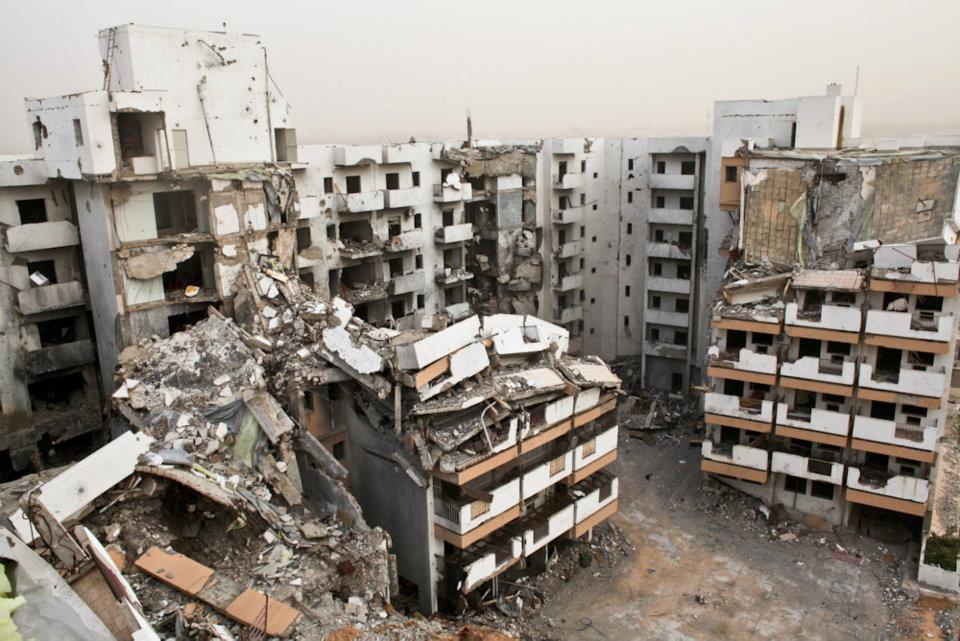
The Al-Tameen building in Sirte, Libya, after a NATO airstrike (Credit: Human Rights Watch/ Sidney Kwiram)
At least two civilians were killed, including Ayesha Bishir, a mother of two who was five months pregnant. Aisha’s husband Mahmoud described to HRW attack happened.
“All I can remember is that I flew into the air then I fell on my back. And it was dark. There was dust everywhere… I went back to search for [my wife] Ayesha and Rawasi. I kept calling them both and eventually Rawasi answered. Rawasi was under something metal. She was doubled over with metal and wood debris on her back. So I pushed away the debris and took her back to the room next to Tahani. And then I went back again to find Ayesha. I couldn’t find her.”
The documents showed that Denmark conducted the strike alongside one other nation, whose identity was redacted even in the declassified document.

A part of one of the documents released to Rasmus. It says: (Via International Committee of Inquiry on Libya (ICIL)) May 1 – attack that killed Gaddafi’s youngest son, Sayf al-Arab, his wife, and three children. Danish fighter jets carried out an attack on an ‘Alternate Command Center’ in Tripoli on the evening of April 30, and it is the assessment of FTK [The Air Tactical Command ed.] that there is conformity with the attack described by ICIL, even though they refer to the date May 1″
When told that it was Denmark, Faraj said his father had sought answers from the Libyan government and NATO for a decade. Yet even with the documents, he didn’t have much hope for accountability. “God will bring us justice,” he said resignedly.
The other civilian killed was Ali Omar Suwaysi, a young man whose family had left the building as the war came closer. Ali stayed behind with his brother Mustafa to guard the tower block.
Maia eventually tracked down Mustafa, who said Ali was upstairs in the family flat when the strike hit. Despite the heavy smoke, Mustafa rushed towards the stairs in a panic looking for his brother. A second strike hit and Mustafa was badly injured – spending 10 days in hospital.
Neither NATO nor Denmark have publicly commented on this strike. We interviewed all witnesses we could, seeking to understand the reason for hitting a residential tower block.
Ahmed Nouri, who lived in a nearby building, told us that before the attack, a radio station aligned to Libyan rebels reported the tower was being used by Gaddafi’s forces. “I remember they talked about weapons and snipers on the top of Al-Tameen Building,” Nouri recalled. The building was hit shortly after the radio report, he said, though he never saw anyone on top of the building.
Abduljalil Abdulatif lived in the tower with his wife and four children. He explained that most families had fled the area as Sirte became the front line. He added that before the attack, he visited the roof of the building and there were no snipers.
Sidney Kwiram, who visited the site for Human Rights Watch during the war, said she found more than a dozen spent small arms casings on the roof, but could not draw definitive conclusions when they were from. A few days earlier there had been clashes in the district between a local rebel family and Gaddafi supporters. The casings could have been from then, Kwiram said.
“A few witnesses I spoke to, including Mahmoud, told me that there were no snipers on the roof. A few others told me that Gaddafi snipers were on the roof around the time of the clashes to control the rebel supporters,” she said.
Kwiram said that during the war HRW visited one of NATO’s headquarters in Italy to discuss civilian casualties, and sought to understand which states conducted some strikes, including this one. “When we tried to have a conversation about that, we got nowhere,” she said.
Donatella Rovera, who investigated the strike for Amnesty International, said the organisation had been unable to get satisfactory answers from NATO about its intelligence. “Assuming that they received information that there was a military target in that building, what did they do to verify it?”
“Very often we see a situation where buildings are bombed based on intelligence that is not up to date at the time of the strike – there was a legitimate military target three hours or three days before the strike.”
Disinformation
A second incident, which was widely reported and featured in the UN Commission of Inquiry’s report, occurred on April 30, 2011 when one of Gaddafi’s residences was hit in the capital Tripoli, killing his son Saif al-Arab. Three of Gaddafi’s young grandchildren were also reported to have been killed. CNN later quoted the Libyan government naming them as Gartaj Hannibal Muammar al-Gaddafi, 3, Saif Mohammad al-Gaddafi, 2, and Mastoura Hamid Abuzitaia. Mastoura was reported to be the daughter of Gaddafi’s daughter Aisha.
The documents show that Danish planes conducted the strikes alone, calling the palace an “alternate command centre” for Gaddafi’s forces. This strike has proved controversial as it was alleged to have targeted Gaddafi – who was reportedly in the building. Critics argue that such targeting was not justified under the protection of civilians mandate. NATO denied targeting Gaddafi personally.

A part of one of the documents released to Rasmus. It says: (Via International Committee of Inquiry on Libya (ICIL)) May 1 – attack that killed Gaddafi’s youngest son, Sayf al-Arab, his wife, and three children. Danish fighter jets carried out an attack on an ‘Alternate Command Center’ in Tripoli on the evening of April 30, and it is the assessment of FTK [The Air Tactical Command ed.] that there is conformity with the attack described by ICIL, even though they refer to the date May 1″
After months of searching, we tracked down the French doctor named in reports as having verified the deaths. In a brief and tetchy call from his practice in southern France, he confirmed seeing the body of Gaddafi’s son but said he only saw one child-sized corpse with its face covered.
Aisha Gaddafi also filed a lawsuit against NATO for the death of her daughter. After several months her then lawyer, Luc Brossollet, agreed to talk. He said he was invited to Tripoli during the war and met Aisha briefly, when she asked him to take on the case. However he confirmed she did not provide significant documentation or evidence of the child’s death, including images or videos.
Overall, the evidence suggests that the victims may have been invented by the Gaddafi regime as part of propaganda to discredit the NATO bombing campaign. An in-depth article into this story will be published in the coming weeks.
Hamedi family
The final strike in the Danish documents involved Khweldi al-Hamedi, a well known Gaddafi loyalist. He had been a vital member of Gaddafi’s leadership team and later a senior military official, and was accused by Libyan rebels of benefiting from millions of dollars from the regime, claims his family denied.
Khweldi’s role in the 2011 war remains disputed. NATO claimed he was an active member of Gaddafi’s forces, but the family insist he retired a number of years before the war and was not involved.
On the night of June 20, 2011, his family home was struck. It was a large walled compound and again its purpose was contested. NATO claimed the site was a command and control node and the facility was “directly involved in coordinating systematic attacks on the Libyan people and was identified through rigorous analysis based on persistent intelligence, surveillance and reconnaissance.”
The family denied that the site was a military base and said it was home to Khweldi’s son Khaled and other family members. There is plenty of evidence the compound was at least partially used for residential purposes. Footage from a few days before the attack shows four young children playing in the garden.
What no one disputes is the devastating effect of the NATO attack.
In total 12 civilians were killed. Khaled, who was not home at the time, lost his wife Safaa, his daughter Khalida, 4, and son Khweldi, 3. His father Khweldi was unharmed and there were no reports of Gaddafi fighters killed.
The documents released to Rasmus showed that Denmark conducted the strike, along with one other partner whose name was redacted.
The case became particularly prominent when Khaled announced he would sue NATO in Belgium over the death of his family. We reached out to his appeals lawyer Jan Fermon. He explained that the case, which was originally filed in 2011, ultimately ended in 2017 when a Belgian court concluded NATO was immune from prosecution.
“If it wasn’t for the immunity I think we would have had a very strong case,” Fermon told us. “The immunity mainly put us in a position where the courts ultimately said ‘we don’t have jurisdiction, we can’t rule on this.'”
Fermon said that NATO’s structure – where strikes are officially conducted collectively but accountability must be sought from the specific country responsible – was a “mechanism to organise impunity.”
“You have no idea what member state [conducted the strike], so you have no option but to sue all the member states. That is, of course, an impossible situation.”
We hoped that Fermon would finally give us access to Khaled, but he said he had lost contact with him a number of years earlier.
Cairo
After more than six months of searching, we finally got in touch with Khaled’s brother Mohammed. He told us they would be happy to speak if we met them in Cairo. So in mid 2023, with Maia unavailable, Rasmus and Joe travelled to the Egyptian capital.
By the banks of the Nile, we sat planning what we would ask the man who had spent 10 years asking the same questions as we had – who killed his family.
Rasmus discusses the next day’s meeting with Khaled al-Hamedi
The next morning we drove out through Cairo’s crowded streets with our photographer Hamada, eventually pulling into a wealthy gated community. Ushered into a nondescript office block, at first it was slightly surreal.
Khaled started with a presentation – a video he had made interweaving images of his family before their deaths with footage from NATO’s press briefing about the attack. As he played a video of the NATO press conference, he paused multiple times to dispute the claims. He then handed us images of his children alongside pictures of civilians killed and injured in a booklet with the title “Message to the world: The Sorman Massacre in Libya”.
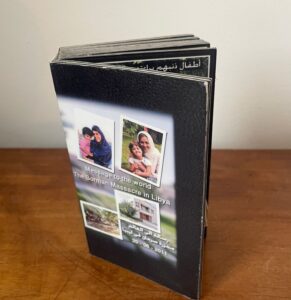
An image of a book produced by the Hamedi family entitled “Message to the world – The Sorman Massacre in Libya”
After slightly more than an hour, though, we went to a quiet restaurant and talked in more detail. Khaled talked through the legal cases and his frustrations – how he still hoped to get some answers.
Finally, around four hours after we arrived, Rasmus reached into his bag to present Khaled with a copy of the report with the words NATO SECRET etched along the top. He read it slowly.
After 12 years and seven months of trying to sue the military alliance, Khaled had an answer as to who dropped the bombs.
“So it was Denmark?” he said.
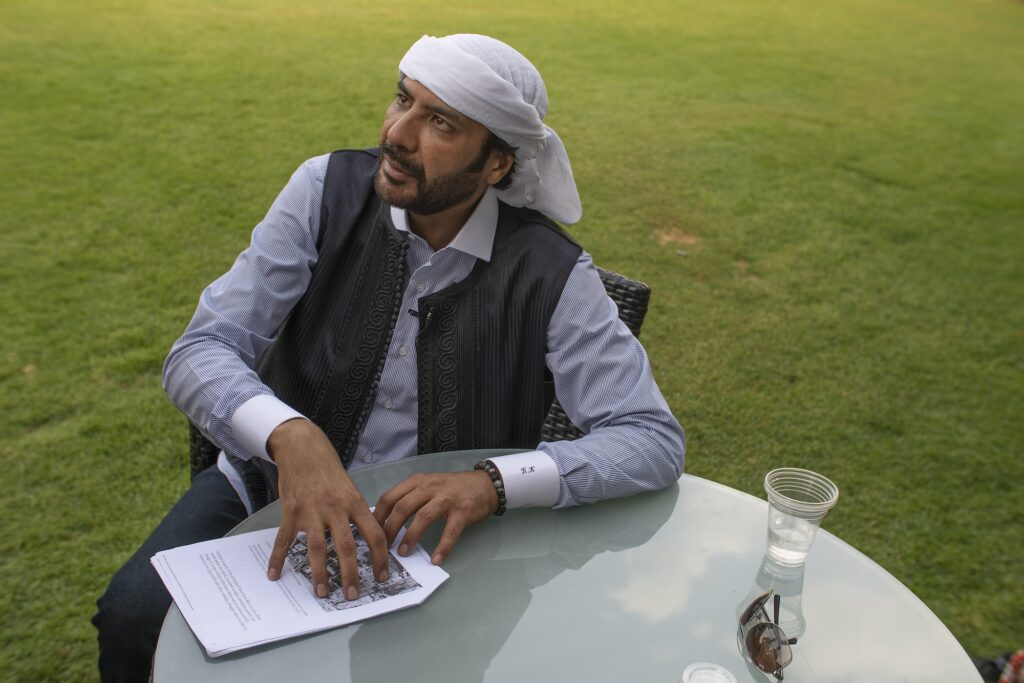
Khaled al-Hamedi reviews the document which shows Danish planes were involved in the strikes which killed his family (Hamada Elrasam/Airwars/Altinget 2023)
‘Lives could have been saved’
The release of the documents will have an impact in Copenhagen. Danish officials have already faced pressure to explain why this document was kept secret for so long, while Khaled has also said he may pursue a legal case in Denmark.
But the documents also put pressure on other NATO states to be more transparent. The review ruled out Danish involvement in a number of other attacks, such as notorious strikes in the town of Majer that killed at least 34 civilians. Those victims’ families are still waiting for answers.
Rovera, of Amnesty International, said it was “certainly not too late” for accountability but the anonymity of coalitions makes it harder. “If coalitions were more transparent with providing what members carried out specific strikes – which wouldn’t be sensitive – then that would be less of a problem,” she said. “For the purpose of accountability it would make a big difference, because we would have someone to engage.”
Garlasco, the former UN investigator, said the documents were “deeply significant” as they showed Denmark reflected on the civilian impact of its airstrikes. But he said the refusal to release it for a decade made it less “useful.”
“Useful not only for lessons learned so that lives could be saved in the future but also useful for the victims of these strikes – that they understand why their family members were killed and could potentially receive some kind of compensation for their loss.”
“How many civilians have died in wars after Libya because the lessons from the Danish report have not been learned?”




